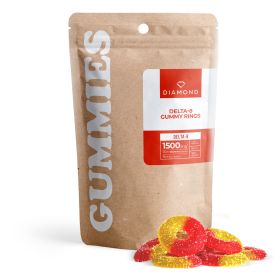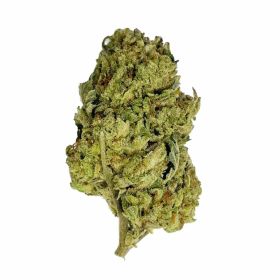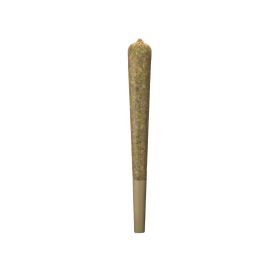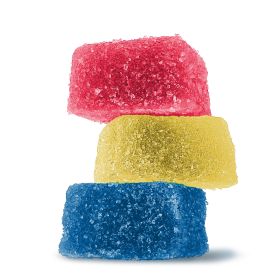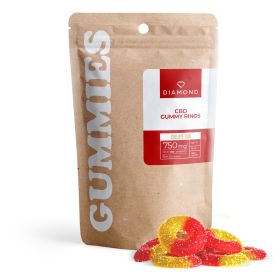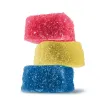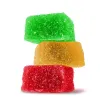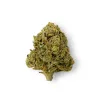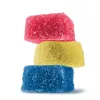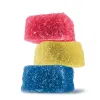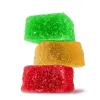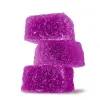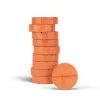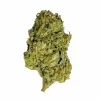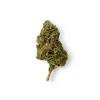The term "dabbing" can initially conjure up images of the Atlanta rappers' dance move, but in cannabis culture, dabbing refers to the process of consuming high concentrations of cannabis extracts — including some of our favorites like dabbing some delta 8 dabs are the ultimate high. But what is dabbing?
With a strange history and a recent surge in popularity, dabbing is one of the most misunderstood methods of marijuana consumption-- and we’re here to make it easier for you to understand! So, if you’re looking for a guide on dabbing, how to do it, and its pros and cons, you’ve come to the right place!
What Are Dabs?
In brief, dabs are concentrated forms of cannabis. More specifically, they’re concentrated versions of butane hash oil, which contains highly concentrated levels of THC.
Dabs are produced through a chemical process that uses butane oil to extract oils from cannabis. Today, dabs are estimated to have a THC concentration of 80%, compared to traditional cannabis’s 10-15%! In fact, at the very least, dabs are more than four times stronger than an average joint.
But how does butane help in the dab-making process? Butane is poured over marijuana, which jumpstarts a process that extracts THC from the plant and dissolves it into the butane, leaving a somewhat solid gummy substance containing insane amounts of THC.
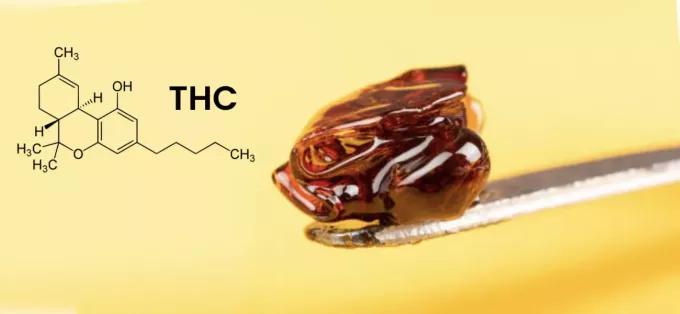
What Is Dabbing?
Dabs, or concentrated forms of cannabis, are extracts consumed using a dab rig, e-rig, or dab pen. Simply put, dabbing is a way to consume concentrated cannabis by dropping a small amount of the extract on a hot surface and allowing it to vaporize. This method gives users nothing but the potent effect and flavor of pure, unadulterated cannabis extract, which means that dabbing is a lot more potent than smoking, vaping, or eating regular cannabis.
Although cannabis can be ingested in many ways, dabbing requires scorching temperatures. As a matter of fact, flash vaporizing dabs requires heat from anywhere between 400-600°F, while smoking flower only takes around 350°F.
While there is more than one way of dabbing, the most common apparatus is a dab rig.
Also called an oil rig, this glass pipe and water chamber look strikingly like a regular bong. The only difference is that instead of a bowl for flower, a rig has a nail for dabs. The nail is usually heated via torch and allowed to cool to the right temperature before dropping a dab. Because dabs require high temperatures, your trusty old lighter will not do the trick when it comes to dabbing.
Electronic rigs, or e-rigs, are a relatively new analog of the more mainstream dab rig. This method allows users to control the exact temperature of dabs, which can be useful when using particular cannabis concentrates that contain high terpene levels. Because they require batteries or electricity and are rather chunky, these devices aren’t convenient for the on-the-go dabber.
That’s where dab pens come in. Usually resembling thick vape pens, a dab pen is the only (convenient) way to make dabbing portable. They have an oven or bowl that heats the concentrate automatically.
Whether you’re using a dab rig, e-rig, or dab pen, the result remains the same: an epic, immediate high unlike any other!
How Long Has Dabbing Been Around?
Concentrates are one of the oldest forms of cannabis consumption; they have a rich history dating back centuries, but they weren’t always symbolized by the complicated, futuristic oil rigs we see in smoke shops today. So, how did dabbing evolve with society?
Oh, Honey Oil!
Hash oil, or honey oil, is a cannabis concentrate containing many of the plant’s resins and terpenes, but most importantly, CBD and THC. It can be sourced from cannabis or hashish, a dry herb blend made by compressing and processing parts of cannabis plants. While hash oil and hashish remain popular in continents like Europe, Africa, and Asia today, it isn’t a new practice.
In the 19th century, hash oils were made by dissolving or infusing hashish with vegetable oil for oral administration. These cannabis extracts and tinctures were even included in the British and American Pharmacopoeias towards the middle of the 1840s.
“Butane honey oil” was briefly available in the States in the 1970s. Produced in Afghanistan and smuggled into the United States, the operation is thought to have ceased after the facilities in which hash oil was produced were destroyed in an explosion.
Goodbye My Hashling, Hello Vietnam
One account suggests that dabbing emerged in the 1960s at the latest. US soldiers in Vietnam extracted THC into a liquid concentrate using solvents like acetone or petrol; they rolled the concentrate in paper and sometimes even combined it with tobacco.
At the time, community magazines like High Times also helped popularize dabs, advertising them as an easier method of reaping the psychoactive benefits of cannabis. They then disappeared for several decades, only to reemerge in popularity in recent years.
Oil & The Internet
Although hash’s popularity in the 20th century was somewhat short-lived, the internet revolution of the late 1990s helped spread knowledge about this dope way to get high.
In 2010, hash oil appeared at the High Times Cannabis Cup, a cannabis festival held in Amsterdam by the famous marijuana magazine. Its debut generated a newfound interest in the concentrates, leading dab-rig technology to become widely available and mass produced. Two years later, the dabbing industry was booming—and it has continued to grow ever since.
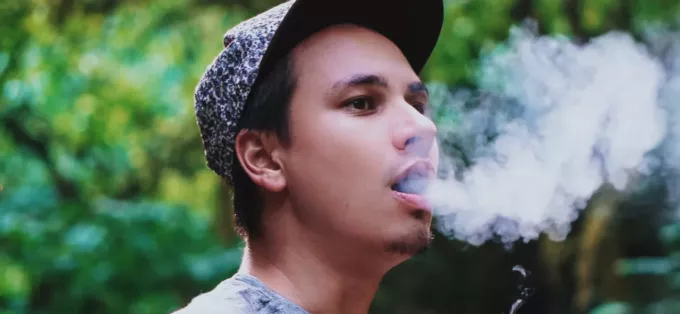
Concentrates, Extracts, and Dabs: Is There A Difference?
The extraction process starts with trichomes and terpenes.
If you’re a nerd, trichomes are the fine outgrowths or appendages emerging from the cannabis plants; these resinous glands contain cannabinoids such as THC and CBD. If you’re a normal person, trichomes are what make really good weed look all frosty. Terpenes, on the other hand, are basically the compounds that make you feel high—regardless of your nerd status.
There are many extraction methods that help separate trichomes from other cannabis plant material to create an extract. Their texture and consistency may vary; they can resemble oil, sap, wax, sauce, taffy, and much more. What makes them so strong is that they contain only the resin from trichomes and no other plant materials. So, they’re cannabis concentrates.
The terms extracts and concentrates can be used interchangeably.
Most extracts (or concentrates) are consumed through dabbing. Concentrates or extracts consumed through dabbing are sometimes also called dabs.
Some concentrates, however, cannot be consumed through dabbing. Kief and tinctures, for example, isolate trichomes from plant materials, but they cannot be consumed using dabbing tools. So, even though they are extractions or concentrates, they are not considered dabs.
Is There More Than One Type of Dab?
Different extraction processes can produce different types of dabs. Although they come from the same plant, they can result in different textures.
Dab Oil
Often referred to as butane hash oil, honey oil, or 710, dab oil is usually yellow or amber in color. It’s commonly stored in vials or needle-less syringes and can sometimes develop crystals.
Shatter
This glassy, solid concentrate is also honey or amber-colored. As the name may suggest, it feels like brittle glass and shatters easily.
Budder
This wittily named substance is usually a smooth, golden-colored concentrate with the consistency of butter. It may be stored in small jars or even wrapped in wax paper.
Dab Wax
A yellowish substance with a wax consistency, this semi-solid extract is considered the “real dab” by some users, and it’s usually stored in a shallow jar or small container for easy access.
Live Resin
Considered the loudest type of extract, this viscous, honey-colored substance is known for its strong aromatic properties. Because it’s made from fresh or frozen plants and not dry herbs, live resin can be hard to come across.
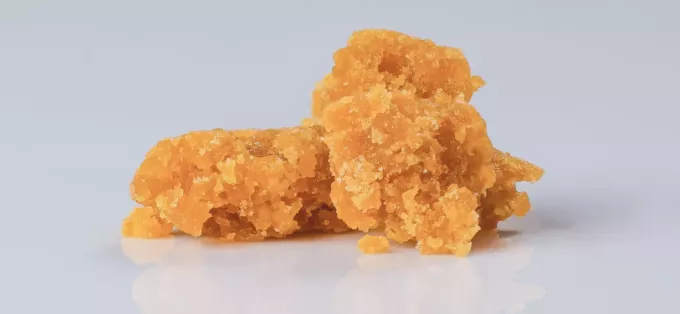
To Dab Or Not To Dab
That is the question. Before you go about investing in high quality dab rigs and asking for wax at your local dispensary, there are some things you need to know about dabbing.
First things first, this isn’t your grandpa smoking a Backwood on his front porch. This isn’t hotboxing your (hopefully parked) car with a group of friends. Dabbing is the most intense way to get high.
If you’re confident in your stoner self and want to try your hand with dabs, read on for a full guide on how to do so.
What Will I Need?
Dabbing requires more tools than other methods of ingesting cannabis. Although this process could be simplified using an e-rig or dab pen, these devices are an investment. Dabbing with an oil rig, however, is the most popular and well-known way to do it.
If you want to join in on the fun, here’s what you’ll need:
-
Dab rig: Oil rigs are water pipes that help cool down the vapor before it enters your lungs. They look a lot like bongs but have a fitting for a nail instead of a bowl.
-
Nail: The equivalent of a bowl for a bong, nails fit into dab rigs and are where you place your dab to be vaporized for inhalation. Because they need to withstand high temperatures, they’re usually made of quartz or titanium. Nails also have sizes and male and female connections, so if your rig has a 14mm stem, you’ll need a 14mm nail, and if you have a male rig, you’ll need a female rig.
-
Carb cap: Carb caps help regulate airflow by covering hot nails after the dab is dropped. Because a nail gets extremely hot when dabbing, carb caps serve as a separate device to make contact with the nail without any second-degree burns!
-
Torch: A lot of people use kitchen torches for heating nails. Any torch will do; just remember to stock up on butane!
-
Dab tool: Also known as dabbers, these little tools are the best way to get the dab out of its container and onto a hot nail. Dab tools can be made of different materials and have different shapes. Simply pick one depending on the texture of your dab.
-
Dabs: Lastly, and most obviously, you need some form of cannabis concentrate to embark on your dabbing adventure. Remember, dabs are extremely powerful, so a small amount of wax, shatter, or resin will do the trick!
How To Dab Using a Dab Rig
Now that you’ve learned a little about the practice of dabbing, you may want to try your luck with this elusive and intense smoking practice. As previously mentioned, dabbing isn’t an experience to be taken lightly. Unlike puff puff passing with your friends or eating a cosmic brownie, dabbing is a majorly intense way to get high.
Once you’re in the mindset to take a trip with dabs, we’re ready to get weird!
Dabbing: A Step-By-Step Guide
-
Step 1: Add water to your rig. The water level should be high enough to bubble but not high enough to splash you. This may take a bit of playing around, but reaching that sweet spot is worth it.
-
Step 2: Light your torch and aim the flame directly at the bottom of the nail. Most people heat it until it begins to turn red hot.
-
Step 3: Once hot, turn off the torch and let the nail sit. It’s recommended that quartz nails cool for about 45-60 seconds, while titanium nails should only cool for about 10 seconds.
-
Step 4: At the right temperature, apply a crumb-sized dab to the nail using your dabber and inhale slowly. Rotate the dab tool in the nail, scraping off all the concentrate.
-
Step 5: With the carb cap, cover and uncover the nail while inhaling to regulate airflow.
-
Step 6: Have a safe trip!
What Are The Benefits of Dabbing?
Dabbing practices are known extensively for their potency. As opposed to smoking flower, hitting dabs leaves users with extracted cannabis oils, making the high a lot stronger and much more intense. Because of this high dosage, dabbing is also the most immediate and effective way to feel the psychoactive effects of cannabis.
That being said, however, dabbing also involves inhaling a much purer substance than flower or vapes. When smoking cannabis, burned plant matter produces resin and hot smoke, but concentrates eliminate most of these unwanted materials while still offering essential cannabis compounds, which is easier on the lungs.
Is Dabbing Dangerous?
Dabbing is completely different from smoking and vaping, and it has its own set of concerns. Although not enough research has been conducted on the long-term effects of dabbing, there are some things to be aware of when partaking in the practice.
Like all psychoactive substances, dabs have the potential to cause some adverse side effects. Overdosing on dabs, while not fatal, is certainly possible, and if you do overdose, you’re likely to experience some of the following:
-
Rapid heartbeat
-
Loss of consciousness or fainting
-
Blackouts
-
Crawling skin sensations
-
Hallucinations
-
Anxiety
-
Paranoia
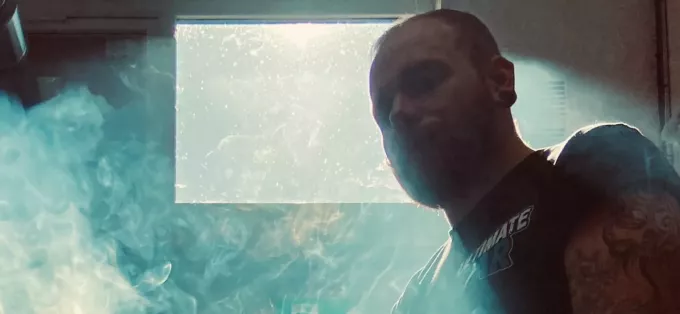
What Is Dabbing? Final Thoughts
Dabbing is an exciting, intense way to reap the psychoactive benefits of cannabis. While it has some upsides and benefits, it’s also crucial to remain aware of the possible consequences of over-dabbing.
With this tell-all guide, including information on its history, dangers, benefits, and a how-to guide, you’ll be equipped to navigate the complicated world of dabbing like a pro!

